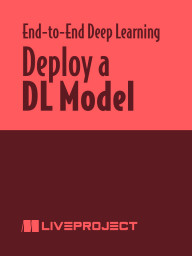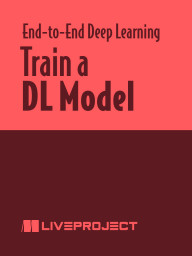products by Mark Ryan
Machine Learning for Tabular Data Video Edition
Machine Learning for Tabular Data delivers practical ML techniques to upgrade every stage of the business data analysis pipeline. In it, you’ll explore examples like using XGBoost and Keras to predict short-term rental prices, deploying a local ML model with Python and Flask, and streamlining workflows using large language models (LLMs). Along the way, you’ll learn to make your models both more powerful and more explainable.
Deep Learning with Structured Data Video Edition
Deep Learning with Structured Data teaches you powerful data analysis techniques for tabular data and relational databases. Get started using a dataset based on the Toronto transit system. As you work through the book, you’ll learn how easy it is to set up tabular data for deep learning, while solving crucial production concerns like deployment and performance monitoring.
Machine Learning for Tabular Data
Machine Learning for Tabular Data delivers practical ML techniques to upgrade every stage of the business data analysis pipeline. In it, you’ll explore examples like using XGBoost and Keras to predict short-term rental prices, deploying a local ML model with Python and Flask, and streamlining workflows using large language models (LLMs). Along the way, you’ll learn to make your models both more powerful and more explainable.
Hands-on Deep Learning Model Training with the Sequential API in Keras
An example of training a deep-learning model in Keras.
End-to-End Deep Learning for Price Prediction
In this practical series of liveProjects, you’ll learn how to bring the power of deep learning to your structured, tabular data. Go hands-on with an open dataset detailing Airbnb rentals in New York City, and take on the challenge of creating an end-to-end deep learning solution for predicting prices. Each project revolves around an essential task of the deep learning pipeline, and is a great way to get started applying deep learning to real-world problems. Work from beginning to end, or dive into whichever section will best augment your skills.
Deploy a DL Model
In this liveProject, you’ll deploy a completed deep learning model so that it can be easily used by your clients. You’ll use the Flask Python library to build a web page that will host your model, and use HTML, CSS, and JavaScript to build a simple web interface. Finally, you’ll take your model out into the world by using ngrok to make locally-served web pages available anywhere.
Train a DL Model
In this liveProject, you’ll create and train your deep learning model to predict where a new Airbnb listing will be priced above or below average pricing. You’ll put pandas, Keras, and scikit-learn into action, and master key deep learning techniques for tracking model performance. You’ll learn to harness callbacks in the Keras deep learning framework to make model training more efficient, and how to ensure consistent results in multiple training runs.
Prepare Tabular Data
In this liveProject, you’ll use the Python tools pandas and Folium to prepare the Airbnb dataset for training a deep learning model. You’ll learn Python concepts that ensure the application you build on this data is robust and maintainable, and implement geospatial and visualization techniques to illustrate the geographic distribution of Airbnb rentals.
Deep Learning with Structured Data
Deep Learning with Structured Data teaches you powerful data analysis techniques for tabular data and relational databases. Get started using a dataset based on the Toronto transit system. As you work through the book, you’ll learn how easy it is to set up tabular data for deep learning, while solving crucial production concerns like deployment and performance monitoring.









